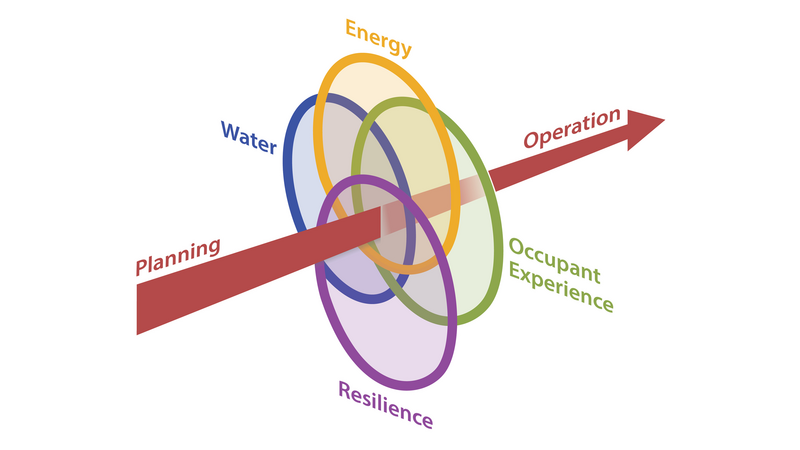
Paving a Path for the Future: A Look at 3 Sustainability Certifications
Decarbonization. Energy efficiency. Low or zero carbon emissions. Promotion of occupant safety. Social equality. Water conservation. Indoor environmental quality. What do these things have in common? Key sustainable building goals, these highly desirable green design features are qualities most clients want to achieve. But how exactly do you measure sustainability?
There are a variety of certifications a project can receive to showcase their sustainability achievements, and each are measured differently depending on the organization.
Let’s explore the details of a few of the most valuable standards – LEED, WELL, and Fitwel – and see how they are each used to ensure a more sustainable building design.
What does it mean to be LEED certified?
One of the most popular green building rating systems, the Leadership in Energy and Environmental Design (LEED) certification program offers a variety of different rating system programs. Each adaptation can be tailored to a specific project’s scope and sustainable design goals. LEED looks at key construction and design elements such as water, energy, and material type/use and rates them according to the U.S. Green Building Council’s standards. To become LEED certified, a project’s design must follow the set carbon, materials, energy, etc. requirements. The Green Business Certification Incorporation then reviews the design and awards points accordingly, the higher the score, the more sustainable the building design. The four levels of certifications you can get include LEED, LEED Silver, LEED Gold, and LEED Platinum.

How is WELL different?
While LEED’s standards focus more on energy and resource efficiency, WELL’s rating system focuses on the human health aspect of sustainability. Using parameters such as light, comfort, nourishment, and fitness, WELL rates how a facility does or does not contribute to the general health and well-being of those who occupy it. Like LEED, this building standard is also administered by the Green Business Certification Incorporation.
“55+ evidence-based design and operational strategies that enhance buildings by addressing a broad range of health behaviors and risks”
Comparability to Fitwel
Similar to LEED and WELL, Fitwel provides a wide variety of sustainability rating systems/scorecard options. Created by the U.S. General Services Administration, the Center for Disease Control, and created and managed by the Center for Active Design, Fitwel has a more holistic approach to sustainability. Community health, equity, physical activity, and occupant safety are just a few of the key wellness elements that Fitwel certifications concentrate on. This particular program focuses on both sustainability and health and has a less vigorous implementation and documentation process in comparison to LEED and WELL.
While LEED concentrates more on utility efficiency and savings, WELL on occupant health and wellness, and Fitwel on a wide variety of sustainable categories with a lower barrier-to-entry implementation process, each program is designed to provide a solid sustainability framework that can be used to help conserve energy, reduce emissions, and protect natural resources. However, a project’s scope, client’s mission, and overall goals will be the ultimate deciding factor for which sustainability certification to pursue.